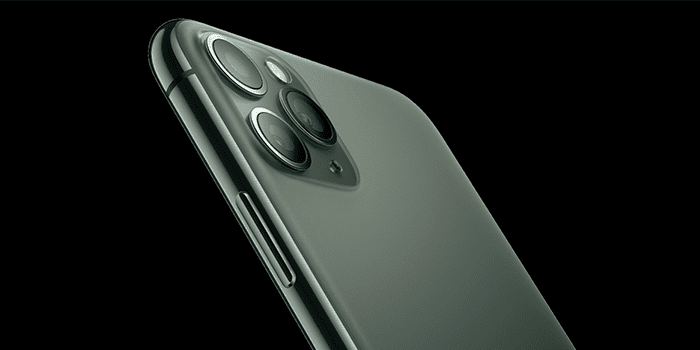iPhone 11 vs Samsung S10 Among all the exciting new smartphones coming out in 2019, none were as keenly anticipated as the Samsung S10 and the iPhone 11. And no wonder: despite these being incremental upgrades to their predecessors, their features and prices make them the top two flagship mobile phones of 2019. Of course, we can’t just leave it at that. Since iPhone vs Samsung is a battle that’s been raging for years now, let’s see how these tech giants stand against each other with their latest smartphone innovations. With Phil as your Phonefinder ref making the tough calls, let’s get ready for a smartphone showdown! |
The CameraIn the run-up to their respective launch dates, there was a lot of noise about the quality of the cameras on these phones. So naturally, it only makes sense that we launch this epic smartphone battle with this discussion. Both the Samsung Galaxy S10 and the iPhone 11 Pro feature three rear-facing cameras that can capture crystal-clear, ultra-wide images with a much larger field of view that their previous incarnations. In the one corner, we have our rookie favourite from a long line of tried and tested camera phones. The iPhone 11 Pro has added a third lens into the mix: this bad boy is packing a 12MP main camera, a 12 MP telephoto, and a 12MP ultrawide lens capable of capturing a 120-degree field of view. However, not all cameras were created equal. We went full fanboy-mode when gushing about Samsung’s cameras in our Phonefinder review of the Galaxy S10, but let’s get another look for those of you, who missed it. The 16MP ultrawide camera of Samsung’s midline model presents a 123-degree field of view, which is wider than the 120-degrees on Apple’s 12MP camera. What’s more, Samsung’s ultrawide camera has a lower aperture than Apple’s. This means that the S10’s camera lenses can open wider to absorb more light, providing greater exposure and giving you more vibrant photos. Same story with the telephoto camera: the Galaxy S10’s aperture f/2.4 while the new iPhone’s stands at f/2.0. For a phone that was heralded for its camera quality, the iPhone 11 isn’t putting up much of a fight. The Winner: Samsung Galaxy S10
|
The DesignIn terms of design, both of these smartphones look much like their predecessors. The Galaxy S10 has its “Infinity O” bent display and camera arrangement, while the iPhone 11 Pro is a round-edged rectangle. The S10’s 6.1-inch screen (3040x1440 resolution, 550 pixels per inch) makes it slightly larger than the 5.8-inch display of the iPhone 11 Pro (2436x1125 resolution, 458 pixels per inch), but to many people this detail is much of a muchness. It really comes down to how big a screen you can handle. And while both of these phones are well-known for their clear and vibrant colour displays, it’s impossible to tell which phone offers a definitively better viewing experience without spending a lot of time with each. Samsung’s infinity display, with its front-facing cameras punched into the top of the screen, creates the seamless illusion of a display that stretches from edge to edge. This is a much sleeker, more minimalist aesthetic, which makes the iPhone notch (first debuted in 2017) feel far more intrusive. But there is one comparison we simply can’t ignore: the rear camera blister. With the Galaxy S10, Samsung opted to stretch its three cameras and flash into a rectangular wedge. Now, some might argue that this looks a bit too angular, like the grill of an old sedan, but that might still be better than what the iPhone 11 serves up. The offset circular lenses swimming around a square blister on the back of the phone just come off clumsy and lopsided. If anyone is winning this beauty contest, it’s got to be… The Winner: Samsung Galaxy S10 |
The DurabilityiPhones, more so than Samsungs, are notorious for their near-instant breakability, but Apple has been quick to sing the praises of the iPhone 11 being able to withstand the elements. One touchstone for this trait is how well a smartphone can withstand water damage, so where do our contenders stand on this? Well, if you checked out our Phonefinder review of the iPhone 11 range, you’ll know that the iPhone 11 Pro can weather being submerged in up to four metres of water. With the Galaxy S10 reaching its limit after being dunked in up to 1.5 metres for up to 30 minutes, you don’t have to be a genius to know who’s won this round. The Winner: iPhone 11 Pro |
 |
The PerformanceNo more messing around now; this is the big leagues. Cameras, design and durability don’t mean a thing in a smartphone that can’t perform. At their September launch event, Apple claimed that their new iPhone is equipped with its fastest processing chipset yet – the A13 bionic processor. This dynamite processing chipset is sure to blow you away as it powers the new handset’s AR and AI capabilities like never before. The processing in the iPhone 11 Pro is also backed up with another mystery chip: the U1. This Ultra Wideband tech makes these iPhones more discoverable to other devices with the same chip, which could translate into a more cohesive iOS ecosystem among other iPhone users and other Apple smart devices. But Samsung’s new chipset is no shrinking violet either. The Galaxy S10 packs either the Snapdragon 855 ship (in US devices) or the Exynos 9820 (everywhere else). Both of these chipsets are counted among the most powerful processors in the world and the best you can get in an Android phone, outside of an upgrade to the Snapdragon 855 Plus. Both are capable chipsets that open you up to a world a fast, streamlined operating capabilities, from media streaming to video calls. However, Apple’s A12 chip already came out on top in a number of earlier tests against the Snapdragon 855. It’s a close call, but the winner’s got to be… The Winner: iPhone 11 Pro |
Final Word From PhilSo, who won? You decide! It’s definitely fair to say that both the iPhone 11 Pro, and the Samsung Galaxy S10 hold their own, and the iPhone vs Samsung debate certainly won’t be resolved today. Given that neither of these devices are 5G-capable (but still have great web compatibility), they’re likely going to have to rely on processing and streaming via more traditional networks. For real power in connectivity, the general consensus seems to point toward fibre delivering the best internet experience. With Phonefinder’s new fibre comparison service, you can get your fibre on and afford the latest iPhone or Samsung too! |
 |



